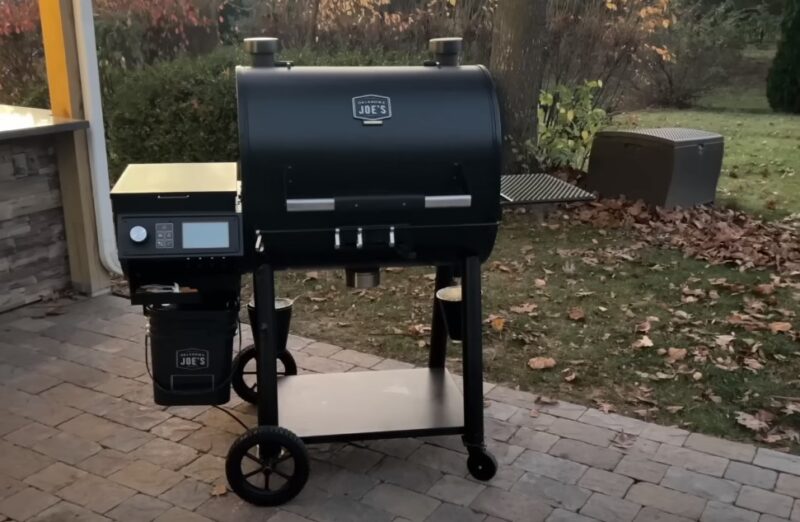Cooking with smoke is a popular and flavorful cooking technique, but it can be daunting for beginners to navigate through the plethora of advice available. As someone who has experienced this confusion firsthand, I understand the need for expert guidance when it comes to mastering the art of cooking with smoke.
That’s why I teamed up with renowned pitmaster Rick Browne to create an online course called Cooking With Smoke 101. Together, we have curated a comprehensive program that covers everything you need to know about smoking, from the basics to advanced techniques.
In this course, we dive into the science behind smoke and its effect on food, the different types of smokers available in the market, and the essential BBQ accessories that can enhance your smoking experience. We also address the health implications of smoking and provide alternatives for those who prefer non-smoked dishes.
One of the highlights of this course is Rick’s flagship smoker training program, which typically costs over $1,000 per person. By enrolling in Cooking With Smoke 101, you gain access to this exclusive training that will help you master your smoker and cook mouthwatering, envy-inducing meals.
Key Takeaways:
- Learn the basics of cooking with smoke and understand the science behind it.
- Discover the different types of smokers and choose the right one for your cooking needs.
- Enhance your smoking experience with essential BBQ accessories.
- Understand the health implications of smoking and explore smoking alternatives.
- Master your smoker with expert guidance and achieve optimal smoke levels and temperature control.
Demystifying Cooking with Smoke
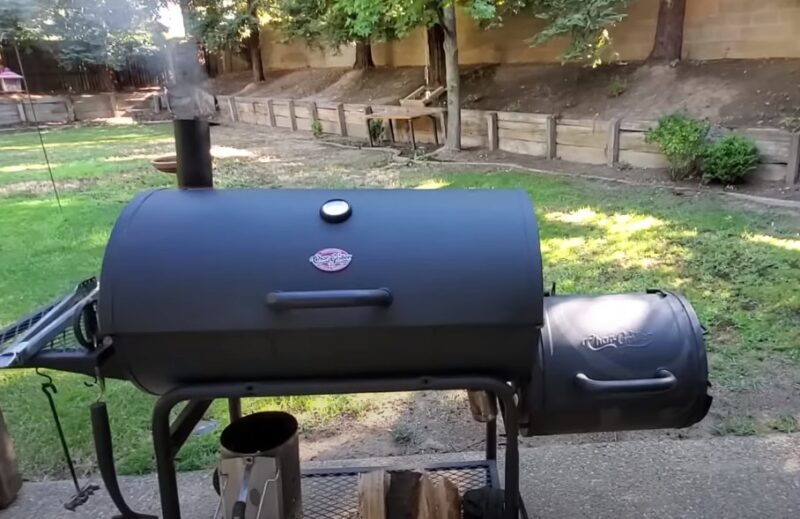
As someone who wanted to elevate their culinary skills, I found myself diving into the world of cooking with smoke, only to be overwhelmed by conflicting information and techniques. The allure of imparting smoky flavors into my dishes was irresistible, but understanding the basics seemed like a daunting task. That’s when I discovered the expertise of pitmaster Rick Browne.
“Cooking With Smoke 101” is an online course created by Rick Browne, a world-renowned barbecue expert. Together, we have designed a comprehensive program that covers all the smoking basics, types of smokers, and essential BBQ accessories. The course not only clarifies the confusion surrounding cooking with smoke but also provides a step-by-step roadmap to becoming a smoke-master in your own backyard.
What sets “Cooking With Smoke 101” apart is Rick’s flagship smoker training course, an invaluable component included in the program. Typically priced over $1,000 per person, this course is designed to help you master your smoker and cook mouth-watering, envy-inducing meals. Rick’s years of experience and expertise are distilled into practical lessons, ensuring that you have the knowledge and skills needed to create smoky culinary masterpieces.
Whether you are a novice or an experienced grill enthusiast, “Cooking With Smoke 101” will empower you to take your smoking game to the next level. With Rick Browne as your guide, you can unlock the secrets of cooking with smoke and transform ordinary ingredients into extraordinary dishes that will leave your friends and family begging for more.
Partnering with Pitmaster Rick Browne
Determined to master the art of cooking with smoke, I sought out the expertise of pitmaster Rick Browne, a world-renowned barbecue expert. I was tired of sifting through conflicting advice and wanted a comprehensive, reliable source to guide me through the process. That’s when I discovered Rick’s expertise and his passion for sharing his knowledge with others.
Partnering with Rick Browne was a game-changer for me. Together, we created an online course called Cooking With Smoke 101, designed to demystify the world of smoking and help aspiring pitmasters like myself become confident in their skills. Rick’s wealth of experience and deep understanding of barbecue culture made him the perfect collaborator, and I was thrilled to learn from him.
Introducing Cooking With Smoke 101
Cooking With Smoke 101 is an all-inclusive course that covers everything you need to know about cooking with smoke. From understanding the basics of smoking to choosing the right smoker and mastering the art of smoke-infused flavors, this course has it all. It even includes Rick’s flagship smoker training course, a comprehensive program that typically costs over $1,000 per person.
| Course Highlights | Benefits |
|---|---|
| Smoking Basics | Gain a solid foundation in the fundamentals of smoking. |
| Types of Smokers | Learn about different types of smokers and their pros and cons. |
| BBQ Accessories | Discover the essential tools and equipment needed for successful smoking. |
| Mastering Your Smoker | Get expert tips on achieving optimal smoke levels, temperature control, and troubleshooting. |
| Cooking Delicious Smoke-Infused Meals | Unlock the secrets of creating mouthwatering smoke-infused dishes. |
If you’re passionate about cooking and ready to take your skills to the next level, Cooking With Smoke 101 is the perfect course for you. With Rick Browne’s guidance, you’ll become a true pitmaster and impress your friends and family with your newfound expertise.
Exploring Smoking Basics
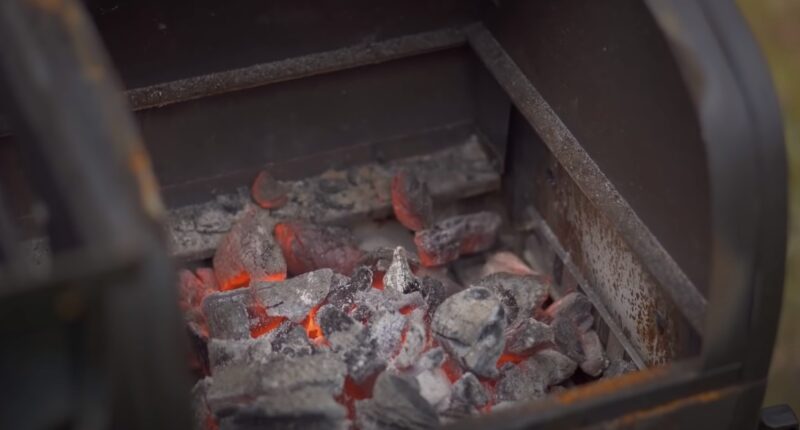
Before delving into the techniques of cooking with smoke, it is essential to understand the basics of smoking and its impact on food and health. Smoking is a cooking method that utilizes the flavor and aroma of smoke to enhance the taste of various dishes. The smoke is generated by smoldering wood chips or wood pellets, which impart a unique smoky flavor to the food.
When food is exposed to smoke, it undergoes a process called “smoke infusion,” where the flavors and compounds present in the smoke penetrate the meat, fish, or vegetables being cooked. This results in a distinct and irresistible smoky taste that is highly sought after by food enthusiasts.
However, it is important to note that smoking should be done responsibly and in moderation. While smoke adds incredible flavor to dishes, it can also pose health risks if not used correctly.
Prolonged exposure to smoke, especially in the case of smoking tobacco, can lead to various smoking-related diseases, including lung cancer and heart disease. Therefore, it is crucial to use smoke solely for cooking purposes and maintain a balanced approach to smoking.
| Key Points: | Impact |
|---|---|
| Smoking enhances the flavor and aroma of food by infusing it with smoke. | Positive: Adds a unique smoky taste to dishes. |
| Prolonged exposure to smoke, especially from smoking tobacco, can lead to smoking-related diseases. | Negative: Increases the risk of lung cancer, heart disease, and other health issues. |
| Smoke should be used responsibly and in moderation. | Neutral: Balanced approach to smoking is necessary. |
Choosing the Right Smoker
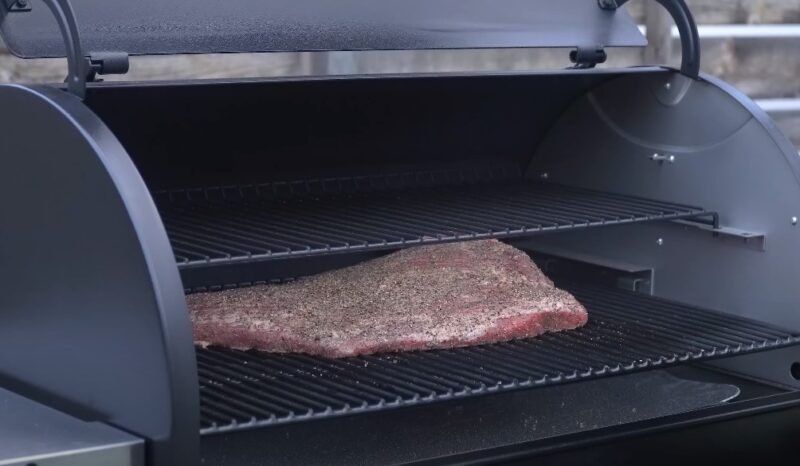
The choice of smoker plays a crucial role in achieving the desired flavors and textures when cooking with smoke. There are various types of smokers available in the market, each with its own unique characteristics and advantages. Let’s explore the different options:
1. Charcoal Smokers
Charcoal smokers are known for their versatility and ability to infuse rich smoky flavors into food. They use charcoal as the main source of heat, which creates a more authentic barbecue experience. They are ideal for slow-cooking meats and can maintain a consistent temperature over long periods.
2. Electric Smokers
Electric smokers offer convenience and ease of use. They are perfect for beginners or those who want a hassle-free smoking experience. With a simple temperature control system, they provide consistent heat and require minimal monitoring. Electric smokers are also ideal for smoking fish and vegetables.
3. Pellet Smokers
Pellet smokers use wood pellets as the fuel source, offering a distinct smoky flavor profile. These versatile smokers allow you to control the temperature with precision, resulting in perfectly cooked food. They are known for their efficiency and the ability to add various flavored pellets to enhance the taste.
| Smoker Type | Advantages |
|---|---|
| Charcoal Smokers | Versatile, authentic flavors, consistent temperature |
| Electric Smokers | Convenient, easy to use, consistent heat |
| Pellet Smokers | Distinct flavor profile, precise temperature control |
When selecting a smoker, consider your cooking preferences and the type of food you want to smoke. Each type has its own benefits, so choose the one that aligns with your taste and cooking style.
Additionally, keep in mind that smoking alternatives, such as liquid smoke or smoked spices, can also provide a smoky flavor if you don’t own a traditional smoker. Experimenting with different techniques and ingredients will allow you to create unique and delicious smoke-infused meals.
Essential BBQ Accessories
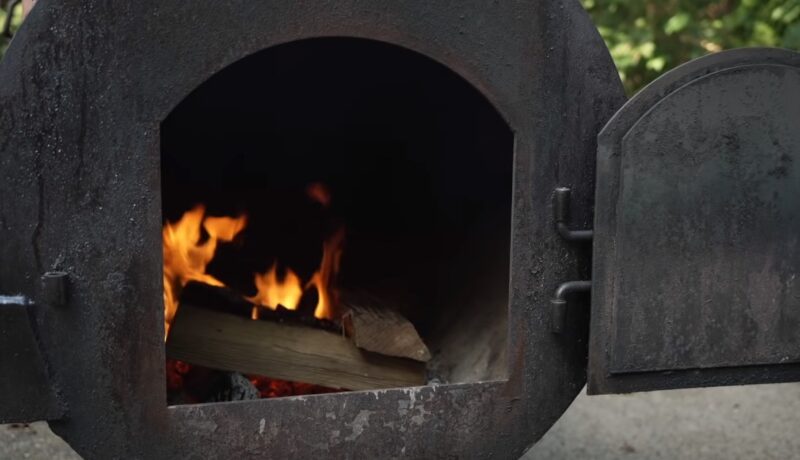
To fully enjoy the art of cooking with smoke, it is essential to have the right BBQ accessories that facilitate the process and optimize the flavors. Whether you’re a seasoned pitmaster or just starting out, these accessories will take your smoked dishes to the next level.
Basting Brush
One of the key factors in achieving mouthwatering, tender meats is the basting process. A high-quality basting brush is a must-have accessory for evenly applying marinades, sauces, and glazes to your meats while they cook. Look for a brush with heat-resistant bristles and a sturdy handle for easy maneuvering.
Meat Thermometer
Accurate temperature control is crucial when smoking meats. A reliable meat thermometer ensures that your food is perfectly cooked, eliminating the guesswork and preventing undercooked or overcooked results. Look for a digital thermometer with a probe that can be inserted into the meat, providing real-time temperature readings.
Wood Chips and Pellets
The choice of wood chips or pellets significantly impacts the flavor profile of your smoked dishes. Experimenting with different types of wood, such as hickory, mesquite, or applewood, can enhance the taste and create unique flavor combinations. Stock up on a variety of wood chips and pellets to add depth and complexity to your smoked creations.
Drip Pan
Smoking produces flavorful juices and drippings that can be used to baste and enhance your meats. A drip pan placed under the cooking grates collects these delicious drippings, preventing flare-ups and preserving the moisture of your meats. Choose a durable and easy-to-clean drip pan that fits your smoker for hassle-free cooking.
| Accessory | Description |
|---|---|
| Basting Brush | Evenly applies marinades, sauces, and glazes to meats while cooking. |
| Meat Thermometer | Ensures accurate cooking temperatures for perfectly cooked meats. |
| Wood Chips and Pellets | Provides a variety of wood flavors to enhance the taste of smoked dishes. |
| Drip Pan | Collects flavorful juices and drippings for basting and moisture preservation. |
Rick Browne’s Smoker Training Course
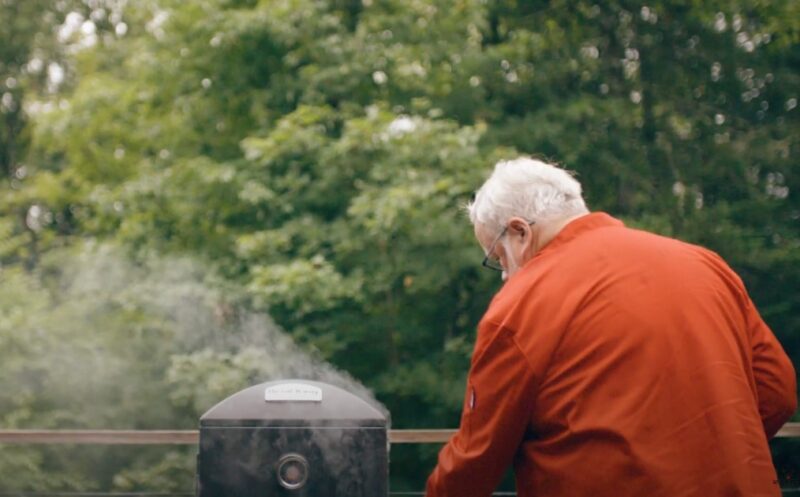
Rick Browne’s smoker training course is an integral part of the Cooking With Smoke 101 program, offering participants the opportunity to learn from a seasoned professional and avoid common pitfalls. As a world-renowned barbecue expert, Rick brings his wealth of knowledge and experience to guide students in mastering the art of cooking with smoke.
The course covers a wide range of topics, starting with the basics of smoking and progressing to advanced techniques. Participants will learn about the different types of smokers available, their pros and cons, and how to choose the right one for their cooking needs.
Additionally, Rick shares invaluable insights into essential BBQ accessories that can enhance the smoking experience. From thermometers and meat probes to wood chips and rubs, participants will discover the tools and ingredients that can elevate their smoke-infused meals to new heights.
One of the highlights of Rick’s smoker training course is his in-depth discussion on the potential health risks associated with smoking. He addresses the relationship between smoking and cancer, the addictive nature of tobacco, and the various smoking-related diseases. By understanding these risks, participants can make informed decisions and practice responsible smoking techniques.
Throughout the course, Rick emphasizes the importance of mastering one’s smoker. Participants will learn how to achieve optimal smoke levels, control temperature, and troubleshoot common challenges that may arise during the cooking process. With Rick’s guidance, they can become confident in their ability to create delicious smoke-infused meals every time.
By enrolling in Rick Browne’s smoker training course, participants will gain access to a treasure trove of knowledge and skills that will set them apart in the world of cooking with smoke. Whether they are beginners or seasoned BBQ enthusiasts, this course offers an immersive learning experience that will unlock their full potential.
Key Takeaways:
- Learn from a seasoned professional to avoid common pitfalls
- Understand the different types of smokers and choose the right one for your needs
- Discover essential BBQ accessories that can enhance the smoking experience
- Gain insights into the health risks associated with smoking and practice responsible techniques
- Master your smoker to achieve optimal smoke levels and control temperature
Mastering Your Smoker
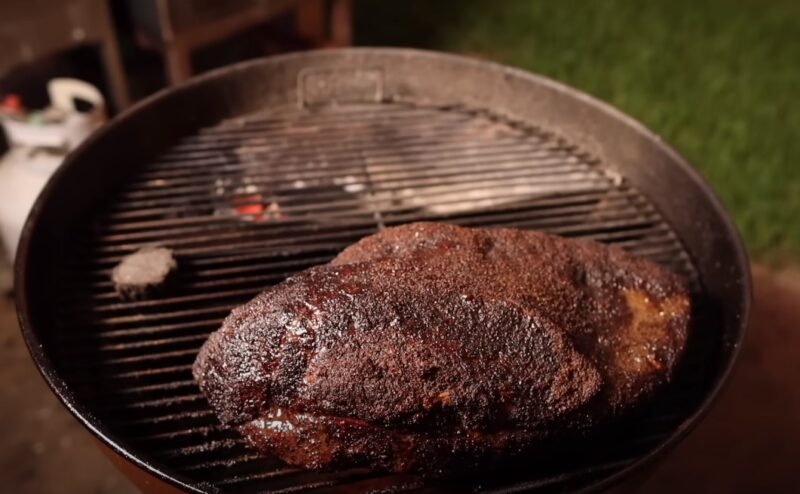
To truly unlock the potential of cooking with smoke, it is crucial to understand and control the smoke produced by your smoker. As I ventured into the world of smoking, I quickly realized that achieving the perfect balance of smoke flavor can be a challenging feat. However, with the guidance of pitmaster Rick Browne and his smoker training course, I was able to gain the skills and knowledge needed to become a true smoke virtuoso.
One of the key lessons I learned from Rick’s course is the importance of choosing the right wood for smoking. Different woods impart unique flavors to the food, so it’s essential to experiment and find your preference. Oak, hickory, and fruitwoods like apple and cherry are popular choices that can add depth and richness to your dishes.
Temperature control is another critical aspect of mastering your smoker. Consistency is key here, as fluctuations in temperature can result in unevenly cooked food. Rick taught me the art of maintaining a steady temperature by adjusting the airflow and using a reliable thermometer. By closely monitoring the temperature and making the necessary adjustments, I was able to achieve perfectly smoked meats and vegetables every time.
| Key Tips for Mastering Your Smoker: |
|---|
| Choose the right wood for smoking |
| Maintain a steady temperature |
| Experiment with different smoking techniques |
| Use high-quality ingredients for optimal flavor |
In addition to temperature control, Rick also emphasized the importance of experimenting with different smoking techniques. Whether it’s hot smoking, cold smoking, or a combination of both, each method offers unique results. Trying out different techniques allowed me to broaden my culinary horizons and create a diverse range of smoke-infused dishes.
Lastly, don’t underestimate the impact of using high-quality ingredients. The flavors of the smoke can greatly enhance the taste of your meats and vegetables, but it’s important to start with fresh, high-quality ingredients. The combination of premium ingredients and expertly controlled smoke can elevate your dishes to a whole new level of deliciousness.
By mastering your smoker and understanding the science of smoke, you can unleash your creativity in the kitchen and create mouthwatering dishes that will impress friends and family. So, embrace the art of smoking and let the tantalizing aromas and flavors of smoke take your cooking to new heights!
Cooking Delicious Smoke-Infused Meals
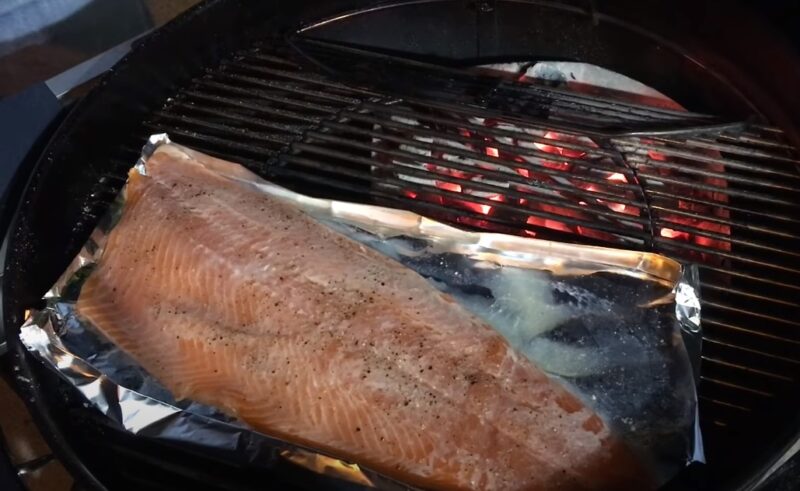
Cooking with smoke opens up a world of culinary possibilities, allowing you to impart unique flavors and aromas to a wide range of ingredients. Whether you’re a seasoned pitmaster or a novice cook, mastering the art of smoke-infused meals can elevate your cooking to new heights. In this section, let’s explore some techniques, recipes, and flavor combinations that will help you create mouthwatering dishes that are sure to impress.
Embracing Slow and Low Cooking
One of the key principles of cooking with smoke is embracing the slow and low method. Cooking at a lower temperature for a longer period allows the smoke to penetrate the ingredients, infusing them with a subtle smoky flavor.
This technique works particularly well with tougher cuts of meat like brisket, pork shoulder, and ribs, as it tenderizes them and enhances their natural flavors. Whether you’re using a charcoal grill, offset smoker, or pellet smoker, maintaining a steady and consistent temperature is crucial for achieving optimal results.
Exploring Flavor Combinations
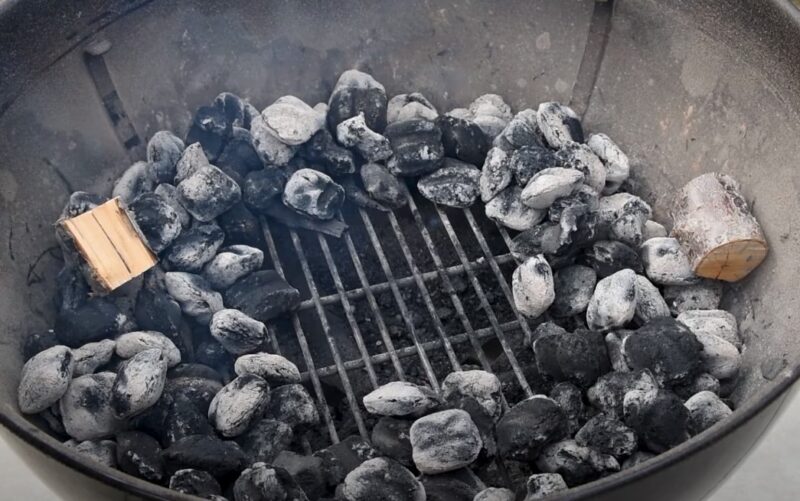
Smoke imparts its own distinct flavor, but the magic truly happens when it interacts with other ingredients. Experimenting with different wood chips or chunks can add depth and complexity to your dishes.
For example, hickory wood imparts a strong, bold flavor that pairs well with beef and bacon, while fruit woods like apple or cherry lend a subtle sweetness to poultry and seafood. Additionally, incorporating aromatic herbs, spices, or even fruit juices into your brines or marinades can create unique flavor profiles that complement the smokiness.
Getting Creative with Side Dishes
While meat may be the star of the show when it comes to cooking with smoke, don’t overlook the opportunity to get creative with your side dishes. Smoke-infused vegetables, such as grilled corn, roasted potatoes, or charred peppers, can add a delicious smoky twist to any meal.
You can also experiment with smoking cheese or nuts for a savory appetizer or dessert. The possibilities are endless, so don’t be afraid to think outside the box and create a full smoke-infused culinary experience.
| Wood Type | Flavor Profile | Best Pairings |
|---|---|---|
| Hickory | Bold and strong | Beef, bacon |
| Apple | Subtle sweetness | Poultry, seafood |
| Cherry | Mild fruity aroma | Pork, game meats |
With these tips, you’re well on your way to creating delicious smoke-infused meals that will leave your guests craving more. Remember, patience and experimentation are key when it comes to cooking with smoke. So fire up your smoker, unleash your creativity, and savor the irresistible flavors of smoke-infused cuisine.
Understanding the Healthier Side of Smoke
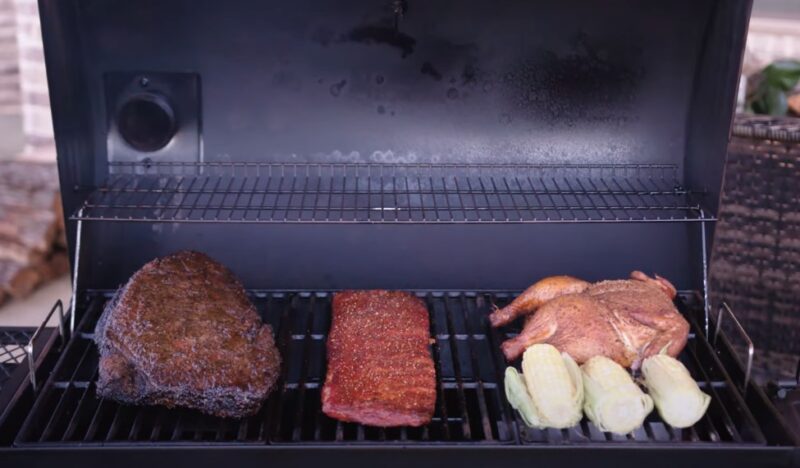
While cooking with smoke adds immense flavor, it is crucial to understand the potential health effects and take necessary precautions to minimize risks. Secondhand smoke can be harmful, and prolonged exposure to smoke can increase the risk of various health conditions. However, when used responsibly and in moderation, cooking with smoke can still be enjoyed with minimal health risks.
One important aspect to consider is the source of the smoke. Using clean-burning fuels, such as natural hardwoods, can help reduce the amount of harmful chemicals released during the smoking process. It is also essential to ensure proper ventilation when cooking with smoke to minimize exposure to airborne particles.
To further promote a healthier cooking experience, it is recommended to avoid using heavily processed or cured meats for smoking, as these often contain high levels of preservatives and additives. Instead, choose high-quality, organic meats and poultry to reduce the intake of potentially harmful substances.
| Key Points: |
|---|
| Use clean-burning fuels, like natural hardwoods |
| Ensure proper ventilation during cooking |
| Opt for high-quality, organic meats and poultry |
“Choosing clean-burning fuels and using high-quality ingredients are essential steps in promoting a healthier cooking experience when using smoke.” – Michael “Medium Rare” O’Donnell
By understanding the potential health effects and taking the necessary precautions, individuals can enjoy the flavors and aromas of smoke-infused dishes while minimizing risks. Cooking with smoke can be a delightful and satisfying culinary experience when done responsibly.
Exploring Smoking Alternatives
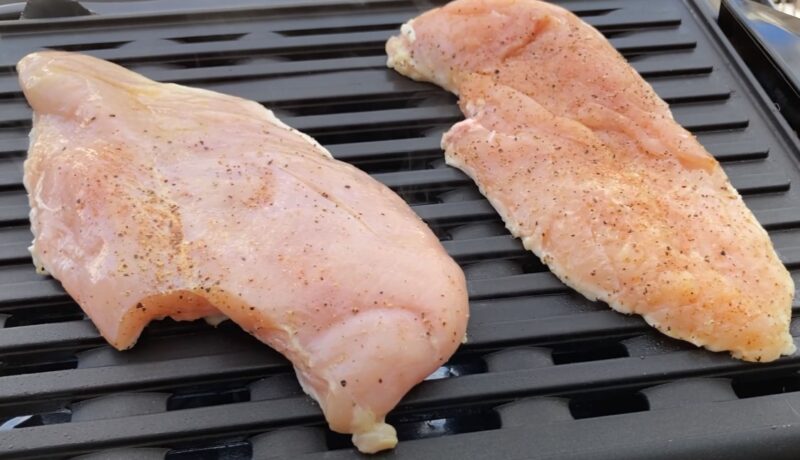
For those who prefer to avoid traditional smoking methods, there are alternative ways to infuse dishes with smoky flavors. These techniques allow you to create delicious meals without the need for a dedicated smoker. Here are some smoking alternatives to consider:
1. Liquid Smoke
Liquid smoke is a popular option for adding smoky flavor to dishes. It is made by condensing the smoke from burning wood chips and capturing the resulting liquid. Liquid smoke is highly concentrated, so a little goes a long way. Simply add a few drops to your marinades, sauces, or directly to the food before cooking to achieve that characteristic smoky taste.
2. Smoked Salt
Smoked salt is a fantastic ingredient for seasoning dishes with a subtle smoky flavor. It is created by slowly smoking coarse salt over wood chips, allowing it to absorb the smoky aromas. Sprinkle a pinch of smoked salt over grilled meats, roasted vegetables, or even popcorn for a delightful smoky twist.
3. Smoked Paprika
Smoked paprika, also known as Spanish paprika or pimentón, is a spice made from dried and smoked red peppers. It adds a rich, smoky taste to a wide range of dishes, from stews and soups to grilled meats and vegetables. Use it as a seasoning or sprinkle it over your dishes to impart a distinct smoky flavor.
These smoking alternatives offer a convenient way to enjoy the flavors of smoke without the need for specialized equipment. Experiment with different options to discover your preferred method of infusing dishes with that irresistible smoky taste.
| Alternative | Description |
|---|---|
| Liquid Smoke | A highly concentrated liquid made by condensing smoke from burning wood chips. Adds smoky flavor to marinades, sauces, and food. |
| Smoked Salt | Coarse salt that is slowly smoked over wood chips, absorbing the smoky aromas. Perfect for seasoning grilled meats, roasted vegetables, and more. |
| Smoked Paprika | A spice made from dried and smoked red peppers. Adds a rich, smoky taste to various dishes like stews, soups, grilled meats, and vegetables. |
FAQ
What is Cooking With Smoke 101?
Cooking With Smoke 101 is an online course created by pitmaster Rick Browne and Michael “Medium Rare” O’Donnell. It is designed to help individuals learn the basics of cooking with smoke and master their smokers to create delicious meals.
What topics does the course cover?
The course covers various topics such as smoking basics, types of smokers, BBQ accessories, and Rick Browne’s flagship smoker training course.
How much does Rick Browne’s smoker training course typically cost?
Rick Browne’s flagship smoker training course typically costs over $1,000 per person, but it is included in the Cooking With Smoke 101 program.
What is the goal of the course?
The goal of the course is to help individuals master their smokers and cook delicious, envy-inducing meals using smoke.
Can I learn how to smoke without owning a traditional smoker?
Yes, the course explores smoking alternatives for those who don’t own traditional smokers, allowing everyone to explore the world of smoke-infused cooking.
Are there any health risks associated with smoking food?
While using smoke solely for cooking purposes is generally safe, prolonged exposure to smoke can have health implications. The course emphasizes responsible smoking practices and provides insights into the potential risks.
Conclusion
“Cooking With Smoke 101” offers a detailed guide to mastering smoke-infused cooking while promoting responsible use and supporting those aiming to quit smoking. Under the guidance of pitmaster Rick Browne, I’ve learned to perfect my smoking techniques and create flavorful dishes.
The program underscores the importance of using smoke solely for culinary enhancement and introduces alternatives to traditional smoking methods. Beyond culinary skills, it also offers support for those seeking to quit smoking, stressing the importance of distinguishing between culinary smoke and harmful smoking habits.
This program has enriched my culinary journey and deepened my understanding of the responsible use of smoke in cooking.

